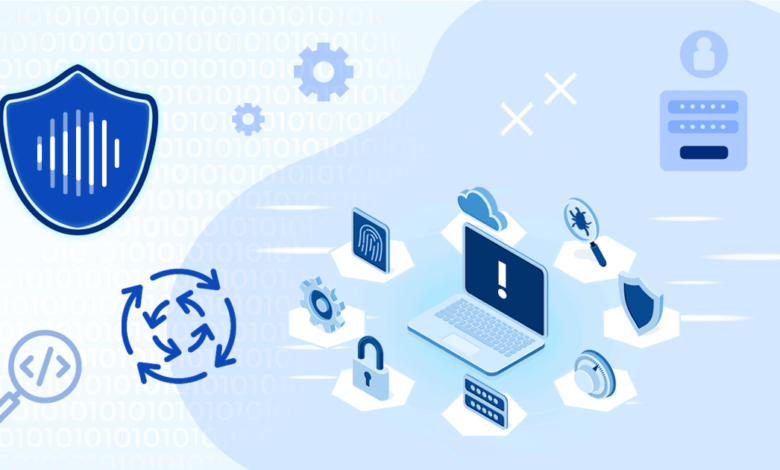
Secure Your Software with Our App Security Testing Platform
Secure your software with our application security testing platform – it’s a phrase that should resonate with every developer and business owner today. In a world increasingly reliant on digital interactions, robust application security isn’t just a nice-to-have; it’s a necessity. This platform offers a comprehensive solution, safeguarding your applications from a wide range of vulnerabilities, saving you time, money, and headaches down the line.
Let’s dive into how it works and why it’s essential for your peace of mind.
We’ll explore the key features, benefits, and integration process of our platform. We’ll also share real-world case studies that highlight the tangible impact of proactive security testing. Think of it as your insurance policy against the ever-present threat of cyberattacks, ensuring your software remains safe and secure, protecting both your reputation and your users’ data.
Introduction to Application Security Testing
In today’s hyper-connected world, applications are the lifeblood of businesses, governments, and individuals alike. From banking apps to social media platforms, our reliance on software is absolute. This dependence, however, exposes us to significant risks if those applications aren’t properly secured. A single vulnerability can lead to data breaches, financial losses, reputational damage, and even legal repercussions.
Application security testing (AST) is crucial for mitigating these risks and ensuring the integrity and safety of our digital lives.Application security testing encompasses a wide range of techniques designed to identify vulnerabilities within software applications before they are deployed. Proactive security measures are far more cost-effective than reactive ones, making AST a critical investment for any organization. The cost of fixing a vulnerability after an application is released is significantly higher than addressing it during the development process.
Types of Application Security Testing Methods
AST methods can be broadly categorized into several key approaches, each with its strengths and weaknesses. Choosing the right combination of methods depends on the specific application, its development lifecycle, and the organization’s risk tolerance.
- Static Application Security Testing (SAST): SAST analyzes the application’s source code without actually executing it. This allows for the detection of vulnerabilities early in the development process, often before the code is even compiled. SAST tools can identify coding errors, insecure configurations, and potential exploits embedded within the codebase itself. For example, a SAST tool might flag the use of vulnerable libraries or the presence of SQL injection vulnerabilities.
- Dynamic Application Security Testing (DAST): DAST, on the other hand, involves testing the application while it’s running. This approach simulates real-world attacks to identify vulnerabilities in the application’s runtime environment. DAST tools are particularly effective at finding vulnerabilities related to web application security, such as cross-site scripting (XSS) and cross-site request forgery (CSRF). A DAST scan might reveal an unprotected API endpoint vulnerable to unauthorized access.
- Interactive Application Security Testing (IAST): IAST combines the strengths of both SAST and DAST. It instruments the application during runtime, providing detailed insights into the application’s behavior and identifying vulnerabilities as they occur. This approach allows for faster identification and remediation of security issues.
- Software Composition Analysis (SCA): SCA focuses on identifying vulnerabilities within third-party libraries and components used in the application. Given the prevalence of open-source software, this is a critical aspect of modern application security. SCA tools can help organizations understand the security posture of their dependencies and identify potential risks associated with outdated or insecure components. For example, SCA might identify a vulnerable version of a widely used logging library.
Our Application Security Testing Platform Capabilities
Our platform offers a comprehensive suite of AST tools, integrating SAST, DAST, IAST, and SCA capabilities into a single, unified solution. This integrated approach provides a holistic view of the application’s security posture, allowing for efficient and effective vulnerability management.Our platform is designed for ease of use and seamless integration into existing development workflows. It features:
- Automated Vulnerability Scanning: Automated scans across multiple testing methodologies, reducing manual effort and accelerating the testing process.
- Detailed Reporting and Analysis: Comprehensive reports that provide detailed information about identified vulnerabilities, including their severity, location, and potential impact.
- Integration with CI/CD Pipelines: Seamless integration with Continuous Integration and Continuous Delivery pipelines, allowing for automated security testing as part of the software development lifecycle.
- Customizable Rules and Policies: The ability to tailor the testing process to meet specific organizational needs and priorities.
- Remediation Guidance: Provides actionable recommendations for fixing identified vulnerabilities, streamlining the remediation process.
“Our platform empowers developers to build secure applications from the ground up, fostering a culture of security throughout the software development lifecycle.”
Key Features of Our Platform
Our application security testing platform provides a comprehensive suite of tools designed to identify and mitigate a wide range of vulnerabilities, ensuring your software remains secure and reliable. We understand the ever-evolving threat landscape and have built our platform to proactively address emerging risks, giving you peace of mind knowing your applications are protected. Our platform’s core functionality is built around automation, accuracy, and ease of integration into your existing development workflows.Our platform goes beyond simple vulnerability scanning.
It leverages advanced techniques like static and dynamic analysis, along with interactive application security testing (IAST), to provide a holistic view of your application’s security posture. This multi-layered approach ensures comprehensive coverage and minimizes false positives.
Vulnerability Detection and Mitigation Capabilities
The platform excels at identifying and assisting in the mitigation of a wide spectrum of vulnerabilities. For instance, it can detect SQL injection flaws, where malicious code is injected into database queries to manipulate data or gain unauthorized access. It also identifies cross-site scripting (XSS) vulnerabilities, which allow attackers to inject client-side scripts into web pages viewed by other users.
Furthermore, it pinpoints cross-site request forgery (CSRF) vulnerabilities, enabling attackers to trick users into performing unwanted actions. Beyond these common vulnerabilities, our platform can detect and help remediate issues related to insecure authentication, authorization flaws, and insecure data handling practices, including those related to sensitive personal information. The platform’s reporting features provide detailed explanations of each identified vulnerability, including their severity level and remediation steps, empowering developers to quickly address these issues.
Feature Comparison
This table compares our platform’s key features against two leading competitors in the application security testing market. Note that specific feature sets and pricing can vary depending on the chosen plan and may change over time. Always consult the vendors directly for the most up-to-date information.
| Feature | Our Platform | Competitor A | Competitor B |
|---|---|---|---|
| Static Application Security Testing (SAST) | Yes, with advanced code analysis | Yes | Yes, but limited language support |
| Dynamic Application Security Testing (DAST) | Yes, including automated crawling and vulnerability detection | Yes | Yes, but slower scanning speed |
| Interactive Application Security Testing (IAST) | Yes, real-time vulnerability detection during runtime | No | Yes, but limited integration options |
| Software Composition Analysis (SCA) | Yes, identifies open-source vulnerabilities | Yes, but limited database | Yes |
| Integration with CI/CD pipelines | Seamless integration with popular CI/CD tools | Limited integration options | Good integration, but complex setup |
| Reporting and Remediation Guidance | Detailed reports with actionable remediation advice | Basic reporting | Good reporting, but lacks detailed guidance |
Benefits of Using Our Platform

Switching to a robust application security testing platform offers significant advantages beyond simply identifying vulnerabilities. It’s about proactively protecting your business, streamlining your development process, and ultimately, saving you money. Our platform provides a comprehensive solution that addresses the multifaceted challenges of modern application security.Our platform translates directly into significant cost savings by preventing costly security breaches. The financial impact of a data breach can be devastating, encompassing legal fees, remediation costs, reputational damage, and loss of customer trust.
Consider a hypothetical scenario: a small e-commerce business suffers a data breach, exposing thousands of customer credit card details. The costs associated with notifying customers, investigating the breach, and implementing corrective measures could easily exceed $1 million, not to mention the potential loss of future revenue. Our platform helps prevent such scenarios by proactively identifying and mitigating vulnerabilities before they can be exploited.
The cost of our platform is a small fraction of the potential losses from a single significant breach.
Cost Savings Through Breach Prevention, Secure your software with our application security testing platform
The financial benefits of our platform extend beyond simply avoiding the direct costs of a data breach. By integrating security testing early in the development lifecycle, we reduce the need for costly rework and patching later on. Finding and fixing vulnerabilities in the early stages is significantly cheaper than addressing them after deployment. This proactive approach allows for efficient allocation of resources, focusing on preventing problems rather than reacting to them.
For example, a large financial institution using our platform might prevent a breach that could cost them tens of millions of dollars in fines and remediation. The savings realized easily outweigh the cost of the platform itself, making it a highly valuable investment.
Improved Efficiency and Reduced Development Time
Our platform streamlines the application security testing process, significantly improving efficiency and reducing development time. Traditional methods often involve multiple, disparate tools and manual processes, leading to delays and inefficiencies. Our platform consolidates these processes into a single, integrated solution, enabling developers to seamlessly integrate security testing into their workflows. This automation reduces manual effort and accelerates the feedback loop, allowing developers to address vulnerabilities quickly and efficiently.
For instance, a team using our platform might reduce their testing time by 50%, freeing up valuable resources to focus on other critical tasks.
Simplified Application Security Testing
The complexity of application security testing can be daunting, particularly for organizations lacking dedicated security expertise. Our platform simplifies this process by providing a user-friendly interface and intuitive workflows. The platform offers automated vulnerability scanning, comprehensive reporting, and easy-to-understand visualizations, making it accessible to developers of all skill levels. This simplification empowers development teams to take ownership of security, fostering a culture of security awareness and reducing reliance on external security consultants.
The result is a more efficient and effective security program, with reduced reliance on expensive external expertise.
Integration and Workflow
Seamlessly integrating our application security testing platform into your existing development pipeline is crucial for maximizing its effectiveness. This section details how to integrate our platform, ensuring it becomes a natural part of your workflow, rather than an added burden. We’ll cover various integration methods and best practices to help you get the most out of our platform.Our platform is designed for flexibility, accommodating various development methodologies and toolchains.
It offers a range of integration options, from simple API calls to more sophisticated integrations with popular CI/CD platforms. This adaptability allows for a customized integration that fits your specific needs and existing infrastructure, minimizing disruption and maximizing efficiency.
Step-by-Step Integration Guide
This guide Artikels a typical integration process. The specifics might vary slightly depending on your chosen integration method and existing setup. However, the general principles remain consistent.
- Account Setup and Configuration: First, create an account on our platform and configure your project settings. This includes defining the scope of your application, specifying the technologies used, and selecting the appropriate security testing modules.
- API Key Generation and Authentication: Generate an API key for secure communication between your development environment and our platform. This key will be used for all subsequent API calls.
- Integration with CI/CD Pipeline: Integrate our platform’s API into your CI/CD pipeline. This typically involves adding a script or task to your pipeline that triggers a security scan after the build process is complete. Popular CI/CD platforms like Jenkins, GitLab CI, and Azure DevOps have well-documented integration guides.
- Scan Configuration and Execution: Configure the security scan parameters based on your application’s specifics. This includes specifying the target URL, authentication credentials, and any necessary environment variables. Then, initiate the scan through the API or our platform’s user interface.
- Results Analysis and Reporting: Once the scan is complete, review the generated report. This report will highlight identified vulnerabilities, their severity, and remediation recommendations. Our platform provides detailed information to aid in efficient vulnerability resolution.
- Remediation and Retesting: Address the identified vulnerabilities. After remediation, retest your application using our platform to verify that the vulnerabilities have been successfully mitigated.
Platform Integration with Development Tools
Our platform boasts robust integration capabilities with a wide array of popular development tools and environments. This ensures a smooth and efficient workflow, minimizing friction between security testing and the development process.
- CI/CD Platforms: Seamless integration with Jenkins, GitLab CI, Azure DevOps, CircleCI, and others allows for automated security testing as part of the build and deployment pipeline.
- Source Code Management Systems: Integration with Git repositories (GitHub, GitLab, Bitbucket) enables automated scans triggered by code commits or pull requests.
- IDE Plugins: We offer plugins for popular Integrated Development Environments (IDEs) like IntelliJ IDEA and VS Code, providing developers with immediate feedback on potential vulnerabilities during the coding process.
- Issue Trackers: Integration with Jira, GitHub Issues, and other issue trackers facilitates efficient tracking and management of identified vulnerabilities.
Best Practices for Effective Platform Utilization
Effectively leveraging our platform requires adhering to best practices that optimize its capabilities and ensure a smooth workflow.
Implementing these best practices will significantly enhance the effectiveness of your application security testing program, leading to more secure software releases.
- Regular Scanning: Schedule regular security scans as part of your development process. The frequency should be determined based on the risk profile of your application and the pace of development.
- Prioritize Vulnerabilities: Focus on addressing high-severity vulnerabilities first. Use our platform’s vulnerability prioritization features to guide your remediation efforts.
- Automate the Process: Integrate our platform into your CI/CD pipeline to automate security testing and make it a seamless part of your development workflow.
- Regular Updates: Keep your platform and its components up-to-date to benefit from the latest security updates, feature enhancements, and performance improvements.
- Training and Education: Provide training to your development team on effectively using the platform and interpreting its results. This ensures that everyone understands the importance of security testing and how to effectively use the platform’s features.
Case Studies and Success Stories: Secure Your Software With Our Application Security Testing Platform
Our application security testing platform has proven its effectiveness across diverse industries and organizational sizes. The following case studies highlight the real-world impact of our platform, demonstrating how it has helped organizations significantly improve their security posture and mitigate critical vulnerabilities. Each case study details the challenges faced, the solutions implemented, and the measurable improvements achieved.
Financial Institution: Reducing False Positives and Improving Efficiency
This large financial institution was struggling with an overwhelming number of false positives from their previous security testing tools. This led to significant delays in remediation, wasted developer time, and ultimately, a slower response to genuine security threats. Implementing our platform allowed them to drastically reduce false positives by over 70%. This was achieved through our platform’s advanced static and dynamic analysis capabilities, coupled with its intelligent vulnerability prioritization engine.
The improved accuracy meant developers could focus on genuine vulnerabilities, accelerating remediation and strengthening their overall security.
Visual Representation: A bar chart comparing the number of vulnerabilities reported before and after implementing our platform. The “Before” bar would be significantly taller, showing a large number of vulnerabilities, many of which were false positives. The “After” bar would be considerably shorter, representing a dramatic reduction in reported vulnerabilities, with a clear distinction between the number of true positives and the significantly reduced number of false positives.
The chart would clearly show the percentage reduction in false positives (70% in this case).
E-commerce Company: Protecting Customer Data and Maintaining Compliance
This rapidly growing e-commerce company needed a robust security testing solution to protect sensitive customer data and ensure compliance with industry regulations like PCI DSS. Their existing security testing process was manual, time-consuming, and lacked the comprehensive coverage needed to identify all potential vulnerabilities. Our platform automated their testing process, providing comprehensive static and dynamic analysis, along with detailed vulnerability reports.
This enabled them to identify and remediate critical vulnerabilities quickly, reducing their risk exposure and ensuring ongoing compliance.
Visual Representation: A pie chart illustrating the distribution of vulnerability types before and after implementing our platform. The “Before” chart would show a large slice representing high-risk vulnerabilities, indicating a significant security gap. The “After” chart would show a drastically reduced slice for high-risk vulnerabilities and a larger slice for low-risk vulnerabilities, showcasing a significant improvement in their overall security posture.
The percentage reduction in high-risk vulnerabilities would be clearly indicated.
Healthcare Provider: Strengthening HIPAA Compliance and Patient Data Security
This healthcare provider faced stringent requirements for protecting patient data under HIPAA regulations. Their previous approach to security testing was fragmented and lacked the centralized reporting and management capabilities necessary for effective compliance. Our platform provided a unified view of their security posture, enabling them to track and manage vulnerabilities across their entire application ecosystem. The platform’s automated reporting features simplified compliance audits, saving valuable time and resources while strengthening their adherence to HIPAA regulations.
Visual Representation: A line graph tracking the number of critical vulnerabilities over time. The line before implementing our platform would show a relatively high and fluctuating number of critical vulnerabilities. After implementation, the line would show a steep downward trend, demonstrating a significant and sustained reduction in critical vulnerabilities, indicating improved compliance and reduced risk to patient data. The graph would clearly label the date of platform implementation.
Security Best Practices and Recommendations

Building secure software isn’t a one-time task; it’s an ongoing process requiring diligent effort and a proactive approach. Integrating security best practices throughout the software development lifecycle (SDLC) is paramount to mitigating risks and protecting your applications from vulnerabilities. This section Artikels key practices and the importance of continuous security testing and updates.
Five Crucial Security Best Practices for Developers
Adopting robust security practices from the outset significantly reduces the likelihood of vulnerabilities. These practices should be embedded into every stage of development.
- Secure Coding Practices: Developers should adhere to secure coding guidelines specific to their programming language. This includes proper input validation and sanitization to prevent injection attacks (SQL injection, cross-site scripting), using parameterized queries, and avoiding hardcoded credentials. Failure to follow these practices leaves applications vulnerable to exploitation.
- Regular Security Audits and Penetration Testing: Independent security audits and penetration testing uncover vulnerabilities that might be missed during internal code reviews. These assessments should be conducted at various stages of development and after deployment to ensure ongoing security.
- Principle of Least Privilege: Applications should only be granted the minimum necessary permissions to function. This limits the potential damage if a breach occurs. For example, a database user should only have access to the specific tables required for the application, not the entire database.
- Robust Authentication and Authorization: Strong authentication mechanisms (multi-factor authentication, strong password policies) are crucial to prevent unauthorized access. Authorization controls ensure that users only have access to the resources they are permitted to use.
- Secure Configuration Management: Misconfigured servers and applications are common sources of vulnerabilities. Security configuration management involves establishing and maintaining secure baselines for all systems and applications, ensuring that only necessary services are enabled and that default passwords are changed.
The Importance of Regular Security Testing and Updates
Regular security testing and updates are not optional; they are essential for maintaining the security posture of any software application. Vulnerabilities are constantly being discovered, and attackers are continuously developing new techniques to exploit them. Delaying updates leaves applications vulnerable to known exploits.Regular security testing, encompassing static and dynamic analysis, penetration testing, and vulnerability scanning, allows for the proactive identification and remediation of security flaws.
Software updates often include critical security patches that address these vulnerabilities. A robust patching process, including thorough testing of updates before deployment, is critical. Ignoring updates leaves systems exposed to known vulnerabilities, significantly increasing the risk of a successful attack. For example, the Heartbleed vulnerability in OpenSSL, left unpatched, exposed sensitive data for numerous organizations.
Comparison of Security Testing Methodologies
Several security testing methodologies exist, each with its own strengths and weaknesses. Choosing the right approach depends on the specific application, its complexity, and the available resources.
| Methodology | Strengths | Weaknesses |
|---|---|---|
| Static Application Security Testing (SAST) | Identifies vulnerabilities early in the SDLC, often during development. Cost-effective for early detection. | May produce false positives, might not detect runtime vulnerabilities. |
| Dynamic Application Security Testing (DAST) | Identifies runtime vulnerabilities that SAST might miss. Provides a realistic view of vulnerabilities in a live environment. | Can be more time-consuming and expensive than SAST. May require specialized expertise. |
| Interactive Application Security Testing (IAST) | Combines the benefits of SAST and DAST, providing more comprehensive coverage. Provides precise location of vulnerabilities. | Can be more complex to implement and requires specialized tools. |
| Penetration Testing | Simulates real-world attacks to identify exploitable vulnerabilities. Provides valuable insights into the effectiveness of security controls. | Can be expensive and time-consuming. Requires skilled security professionals. |
Technical Specifications and Support
Our application security testing platform is designed for seamless integration into your existing workflows, offering robust performance and comprehensive support. This section details the technical specifications and support services available to ensure a smooth and efficient user experience. We understand that robust technology needs robust support, and we’ve built our services with that in mind.
Understanding the technical requirements and support options is crucial for a successful implementation. The following sections Artikel the system requirements, compatibility details, and the support services we provide to our clients.
System Requirements
To ensure optimal performance, our platform requires specific system resources. These requirements are designed to handle the demands of various testing scenarios, from small-scale applications to large-scale enterprise systems. Meeting these requirements ensures a smooth and responsive user experience.
- Operating System: Windows Server 2019 or later, Linux (CentOS 7 or later, Ubuntu 20.04 or later)
- Processor: Minimum 2 GHz quad-core processor; recommended 4 GHz octa-core processor or higher
- Memory (RAM): Minimum 8 GB RAM; recommended 16 GB RAM or higher
- Storage: Minimum 100 GB of available disk space; SSD recommended
- Database: PostgreSQL 12 or later (included with the platform)
- Network: Stable internet connection with sufficient bandwidth for uploading and downloading large files.
Platform Compatibility
Our platform is designed for broad compatibility, supporting a wide range of programming languages and application types. This ensures that you can leverage our platform regardless of your technology stack. We’re committed to continuous improvement, regularly updating our compatibility matrix to support the latest technologies.
- Programming Languages: Java, .NET, Python, PHP, JavaScript, Ruby, and more.
- Application Types: Web applications, mobile applications, APIs, and microservices.
- Cloud Platforms: AWS, Azure, GCP, and on-premise deployments.
Support Services
We offer a comprehensive suite of support services designed to assist you at every stage of your journey with our platform. From initial setup to ongoing maintenance, our dedicated team is committed to ensuring your success.
- 24/7 Technical Support: Access to our expert support engineers via phone, email, and chat.
- Knowledge Base: A comprehensive online resource with FAQs, tutorials, and troubleshooting guides.
- Dedicated Account Manager: A personalized point of contact to assist with onboarding, training, and ongoing support.
- Regular Software Updates: Automatic updates to ensure you have access to the latest features and security patches.
Frequently Asked Questions
Here are answers to some frequently asked questions about our platform’s functionality and usage.
What are the pricing tiers for your platform?
We offer various pricing tiers based on your specific needs and usage. Contact our sales team for a customized quote.
How long does it take to integrate the platform into my existing workflow?
Integration time varies depending on your existing infrastructure and complexity. Our team provides guidance and support throughout the process, aiming for a seamless transition.
What kind of training do you offer for your platform?
We offer comprehensive training resources, including online tutorials, webinars, and personalized onboarding sessions to ensure your team is proficient in using the platform.
What security measures are in place to protect my data?
Our platform employs industry-standard security measures, including encryption, access controls, and regular security audits, to protect your data.
What happens if I encounter an issue with the platform?
Our 24/7 support team is available to assist with any issues you may encounter. We strive to resolve issues promptly and efficiently.
Conclusive Thoughts

Ultimately, securing your software is an ongoing process, not a one-time fix. Our application security testing platform provides the tools and insights you need to stay ahead of the curve. By integrating robust security testing into your development lifecycle, you’ll not only protect your applications but also foster a culture of security within your organization. Investing in application security is investing in the long-term health and success of your business.
Let us help you build a more secure future, one application at a time.
Answers to Common Questions
What types of vulnerabilities does your platform detect?
Our platform detects a wide range of vulnerabilities, including SQL injection, cross-site scripting (XSS), cross-site request forgery (CSRF), insecure authentication, and many more. The specific vulnerabilities detected depend on the chosen testing methodology.
How much does your platform cost?
Pricing varies depending on your specific needs and the scale of your project. Contact our sales team for a customized quote.
What kind of support do you offer?
We offer comprehensive support, including email, phone, and online documentation. We also provide regular updates and training resources to help you get the most out of our platform.
Is your platform compatible with my existing development tools?
Our platform integrates seamlessly with many popular development tools and environments. Check our documentation for a complete list of compatible tools.





